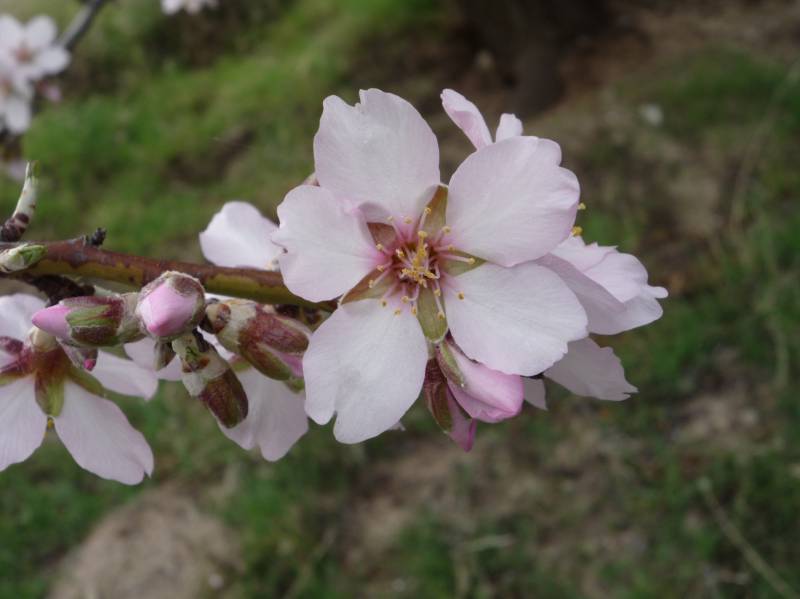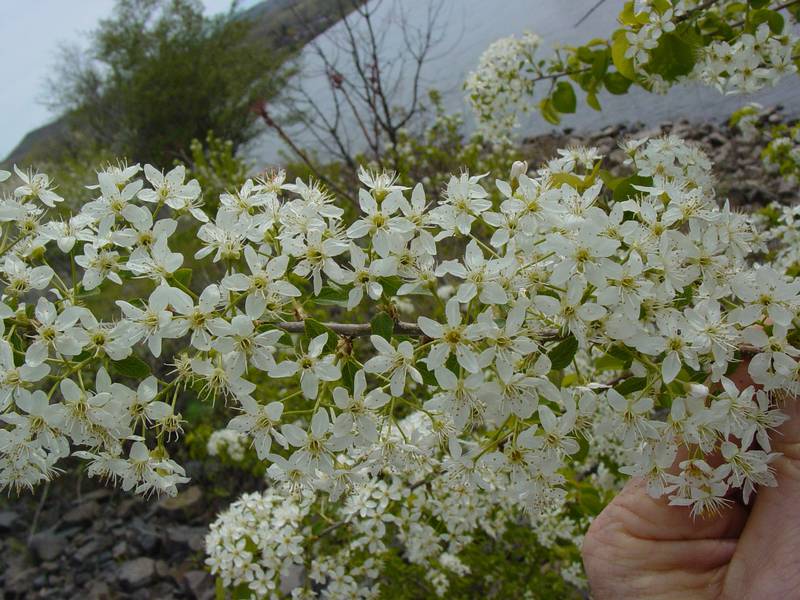Prunus dulcis
Prunus mahaleb
almond
mahaleb cherry, perfumed cherry
Leaves alternate, deciduous, the petioles puberulent, 8-15 mm. long, the blades oval to broadly elliptic-ovate, 2-5 cm. long, abruptly acute, with fine, rounded, gland-tipped teeth, glabrous and pale green.
Flowers 4-12 in short, leafy-bracteate racemes, the pedicels up to 2 cm. long;
calyx greenish-white, the 5 lobes entire, oblong-lanceolate, 3 mm. long, equal to the tube;
petals 5, white, oblanceolate, 7-9 mm. long;
stamens about 20;
pistil 1, simple.
Drupe ovate, 6-8 mm. long, nearly black.
Prunus dulcis
Prunus mahaleb
Occurring in scattered locations east of the Cascades crest and in the Columbia River Gorge in Washington; Washington, Idaho, and California.
Ocurring on both sides of the Cascades crest in Washington; British Columbia to California, east to Montana, Idaho, Utah, and also in the eastern United States.
- Local floras:
CA,
OR,
WA
- Local Web sites:
CalFlora,
CalPhotos,
Flora NW,
PNW Herbaria
WildflowerSearch
iNaturalist (observations)
USDA Plants Database
- LBJ Wildflower Center
- SEINet
- Plants of the World Online
- Encyclopedia of Life
- Wikipedia
- Google Image Search
- Local floras:
BC,
OR,
WA
- Local Web sites:
Flora NW,
PNW Herbaria
WildflowerSearch
iNaturalist (observations)
USDA Plants Database
- LBJ Wildflower Center
- SEINet
- Plants of the World Online
- Encyclopedia of Life
- Wikipedia
- Google Image Search



